Children
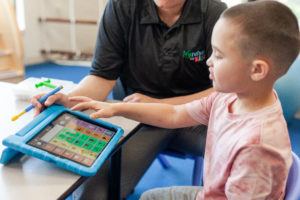
Applied behavior analysis, also known as ABA or ABA therapy, is a research-based treatment that has been shown to be effective for individuals with a variety of behavioral and developmental conditions.
It is more comprehensive than early intervention and is most commonly used to address problematic or dangerous behaviors and to improve skill deficits for individuals that have been diagnosed with autism.
Although ABA therapy can be effective for a wide range of individuals, years of research show that the strategies and processes to be the most effective for children before the age of five.
Early intervention can reduce behaviors that may have become engrained or routine. Early intervention also has greater chance of building pivotal developmental skills. Through a comprehensive approach, early intervention can include a focus on communication, language, play, self-help/adaptive, learning readiness, and social skills, as well as a reduction of challenging behaviors.
Programming is research based and tailored to each child’s specific needs and should include the adults in the child’s life to encourage skill growth and generalization outside of therapy sessions.
Starting early intervention can mean you’re catching and correcting issues at a critical point in the development of your child, changing their developmental path.
Written By:
Adrienne Oaks, M.Ed.
BCBA, COBA / Clinical Director

ASAP, YMCA, RSVP. Acronyms are all around us, permeating our lives and activities. Sometimes we truncate words just for the heck of it, “kay” instead of “okay” or “app” instead of application. Then there’s the world of healthcare and medicine, and suddenly everything is a jumbled mess of alphabet soup. It’s hard to keep track of what all the acronyms and abbreviations stand for, so today’s focus is on AAC. It stands for Augmentative and Alternative Communication.
That’s a lot of words and letters to type; healthcare professions like the quick version “AAC” much better. As parents, it’s a lot scarier to hear another clump of letters without really understanding what it means. AAC is basically a way for individuals to get help (augment) or replace (alternative) communicatio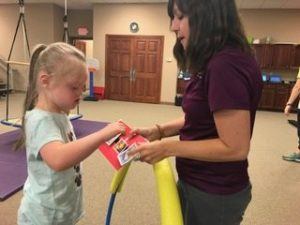 n. AAC can come in a high tech form or a low tech form.
n. AAC can come in a high tech form or a low tech form.
Low tech AAC is anything that doesn’t get programmed with a digital voice, message, or screen. There is a low tech form of AAC called Picture Exchange Communication System (sorry, it’s another acronym: PECS), which is all about requesting and then commenting using special pictures. Other low tech forms of AAC could be a book full of pictures people can point to for requesting or even a book of common people or activities in their day-to-day life. High tech AAC (think Stephen Hawkings) is about ease of access, comfort of use, and typically is used by communicators with a little more ability to understand the complexity of a more complicated system, although preschoolers to the elderly can use high or low tech AAC.
High tech AAC can be as simple as one giant, clicking button, called a switch. Some switches have 1 big button, others have a few smaller buttons. Each button holds a single, recorded message. When the communicator bumps or hits the switch, the message plays. AAC can also be as complicated as an IPad application or specialized, portable machine that’s only job is to talk. These higher tech devices come with programmed software from screen layouts of 4 to 50 full of vocabularies, subjects, word prediction, keyboards, games, search functions, access to the internet for social networking, and the list of possibilities goes on.
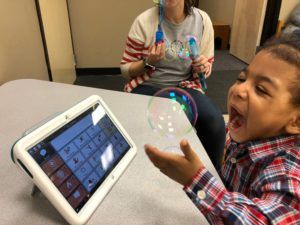
Now that we’ve had a quick background, the initial fear of the unknown should be fading…and all the questions are forming. The first thing to realize is that AAC can either augment language where it boosts, helps, and lifts a speaker’s verbal communication or it can be an alternative for them, or the third option: AAC can do both augment and be an alternative. Simply because a kiddo needs AAC doesn’t mean they don’t need their voice. Having goals in therapy to address AAC doesn’t mean your child isn’t learning to use their verbal words. In no way does it mean a child’s verbal and expressive language skills will fade, stop, or never grow. In fact, the truth is that AAC does the opposite. It makes verbal language explode. AAC gives children with a variety of diagnoses, disorders, delays, and deficits the ability to communicate with adults, teachers, and peers who may not have understood them before. It teaches children to actively seek out communication partners, to make requests, and to share their thoughts and ideas in a way that without the AAC would likely not have happened. AAC gives children opportunities. AAC gives children confidence. AAC gives children power. AAC gives children models, repetitions, and examples of more words than they would have had access to on their own, and soon, the children have heard the word enough from the AAC, that they can start verbalizing it on their own. AAC is fully customizable, modifiable, and portable. It goes where your child goes, can be used as your individual child needs, and there is no limit to the potential for their language. AAC is kind of like pixie dust…a little sprinkle can transport a child to Never Neverland: a new world of wishes, wonder, and words that they’ve never, never seen before…and you get to go along for the ride.
Read MoreAre you having trouble motivating your child to practice their speech and language skills at home? Your child’s speech therapist is likely assigning tasks to practice at home throughout the week to reinforce the skills they’re learning in therapy. Home practice can make a huge difference in their progress and usually means faster improvement. Speech therapy isn’t an easy fix and it requires a lot of hard work and consistent practice over many months or even years. Home practice does not have to be boring! Below is a list of applications, websites, and games that you can utilize to make home practice fun:
- Applications

o My PlayHome
- Compatibility: iPhone, iPad, and iPod touch
- Price: $3.99
- Description: My PlayHome is an interactive doll house game that contains a variety of male and female characters that can eat, drink, cook, shower, sleep, and so much more. Your child can explore every room in the house while enjoying the colorful and detailed illustrations.
- How to use it:
- Expressive language skills: Labeling actions and common objects, producing regular and irregular past tense verbs, answering wh- questions, describing picture scenes, telling how common objects are used, naming categories, producing he/she pronouns and regular plural -s.
- Receptive language skills: Identifying common items, understanding verbs in context, understanding use of common objects, following directions, and understanding pronouns.
- Why it works: My patients absolutely love this game. It is so fun and motivating- they don’t even realize they are working on a variety of language skills!
o Articulation Station
- Compatibility: iPhone, iPad, and iPod touch
- Price: Lite version is free, individual sounds range from $3.99 to $7.99, and full version is $59.99
- Description: The application includes 22 different sounds and 6 engaging articulation activities to help your child speak and pronounce their sounds more clearly.
- How to use it: Select the individual sound(s) your child is working on in speech therapy and practice at the word, phrase, sentence, or story level.
- Why it works: The application is fun, colorful, and engaging. You can practice your child’s sounds through flashcards, matching games, rotating sentences, unique sentences, and stories. The activities are so fun that my patients often forget they are “working” on their articulation skills.

- Websites
o Home Speech Home
- Link: https://www.home-speech-home.com/
- Description: Home Speech Home is a website created by two certified speech-language pathologists. This website offers a variety of activities and word lists to practice articulation, apraxia, language, and stuttering principles. In addition, speech and language developmental norms and an overview of various speech and language disorders are also included.
- How to use it: I frequently utilize the word lists feature with my older patients. I select the specific sound(s) that my patient is working on and incorporate the words while playing their favorite board game or within conversation. You can practice their articulation skills at home with premade words, phrases, sentences, and stories.
o Mommy Speech Therapy
- Link: http://mommyspeechtherapy.com/
- Description: Mommy Speech Therapy is a website created by a certified speech-language pathologist. This website offers a variety of free articulation worksheets that include colorful pictures of your child’s specific target words, as well as helpful tips and tricks on how to increase your child’s speech and language skills at home.
- How to use it: You can select your child’s specific sound(s) and print out the associated free articulation pictures, cut them into individual pictures, and play a variety of games at home. You can hide the pictures around the house and have a “scavenger hunt” and ask your child to name the pictures when they find them. You can print out an extra page and play Go Fish or a matching game with the pictures while reinforcing their articulation skills. The options are limitless!
- Games

o Guess Who
- How to play: You can target a variety of language and articulation skills with this classic board game. Guess Who is great for working on he/she pronouns, asking questions, answering yes/no questions, producing grammatical forms (e.g. do/does, has/have), and articulation skills at the conversational level.
o Hedbanz
- How to play: Hedbanz is a fun way to work on naming categories, answering yes/no questions, turn taking, and articulation skills while your child guesses the identity of the card they’ve been dealt.
o Simon Says
- How to play: Simon Says is a quick and easy game to work on identifying common objects (e.g. body parts), following one-step directions, as well as directions of increasing length and complexity.
If you have questions about your child’s speech and language skills please contact ABC Pediatric Therapy Network at https://www.abcpediatrictherapy.com.
Read MoreKids LOVE Halloween…between dressing up, the decorations, parties, and of course the candy…what’s not to love? But let’s be honest, Halloween is definitely not the most sensory friendly holiday. For kids with sensory processing disorder, it can be a literal nightmare. From the itchy costumes, flashing lights, loud noises, and unexpected scares, the night of Trick-or-Treat can be really overwhelming for you and your child. Below are 6 ways to have a sensory friendly Halloween this year!
- The costume…perhaps the most important step that you can control! Some costumes are scratchy, come with face paint that can be sticky or slimy, masks that smell funny, or other head pieces, that can just be painful for kids with sensory issues. Take your child with you to the store to feel the costume and gage their reaction when they touch the costume. That will give you a good idea if they’d be able to tolerate it for a whole evening or not. You could also have them wear some of their most comfortable clothes under their costumes. Or focus on using some of their own clothing to make a unique costume, keep it simple like a cowboy or a cat! When in doubt, do a trial run a few days before to ensure their comfort…you’ll appreciate it later when you have avoided a meltdown.

- Practice, practice, practice! Set-up time for you and your family to practice Halloween etiquette. First start with your own home, where things are most familiar. Work on ringing the door bell, what to say/how to respond, and how to take the candy…that way they know what to expect and can learn the routine. Next practice at a family or friends house, where things are familiar. It’s much easier to practice on a familiar face than a stranger.
- Plan your Trick-or- Treat route ahead of time. Try to Trick-or-Treat at neighbors who know you and your kids if possible. It is always easier to go to familiar places with familiar people. And you will also feel comfortable asking them questions like: what kind of decorations they have in their yard. Or they will not get offended if your kiddo is getting overstimulated and does not say “thank you” or respond appropriately to a question.
- P
 lan your time accordingly. Going Trick-or-Treating earlier in the night can be helpful, as it is often less crowded initially. Your child may benefit from a picture schedule, timer, or checklist so they know what to expect! Incorporating “break” times in which they can go back to the house or into your car, can help sensory overload. Be aware of your child’s warning signs that they might be getting overstimulated.
lan your time accordingly. Going Trick-or-Treating earlier in the night can be helpful, as it is often less crowded initially. Your child may benefit from a picture schedule, timer, or checklist so they know what to expect! Incorporating “break” times in which they can go back to the house or into your car, can help sensory overload. Be aware of your child’s warning signs that they might be getting overstimulated. - Go to smaller events…Trunk-or-Treats, mall, and/or church events are becoming increasingly popular, especially for parents who work, thus limiting the time families can go Trick-or-Treating. These events tend to be for kids of all ages, so it could limit the number of scary masks or decorations you encounter. This will greatly reduce the amount of transitions for you to navigate as well! These events can get crowded, so be sure to call ahead, to see what times tend to be less busy or how many people they are expecting.
 Make your own Halloween Traditions. When all is said and done, there is no rule saying you have to participate in any of these activities. If they are too much, it’s simply too much! Take it in stride and create your own Halloween traditions, by making it a pizza or game night, do
Make your own Halloween Traditions. When all is said and done, there is no rule saying you have to participate in any of these activities. If they are too much, it’s simply too much! Take it in stride and create your own Halloween traditions, by making it a pizza or game night, do  your child’s favorite activity, or have a special Mommy or Daddy only date every year to make the holiday special in another way.
your child’s favorite activity, or have a special Mommy or Daddy only date every year to make the holiday special in another way.
I hope these recommendations help you and your child have a happy and safe Halloween! Be sure to visit our website for other fun tips and information www.abcpediatrictherapy.com
Read More Skip to content
Skip to content

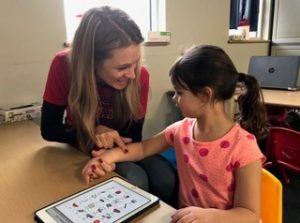
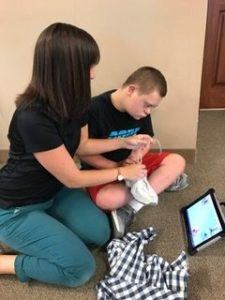
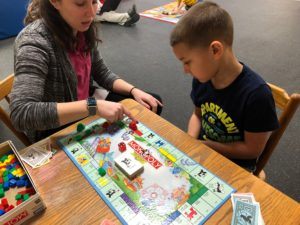
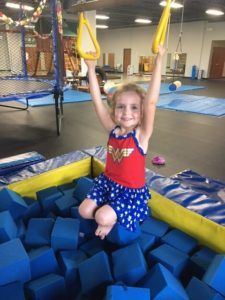
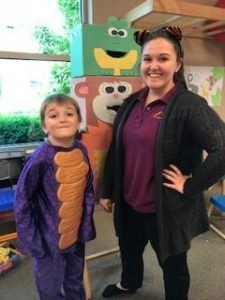
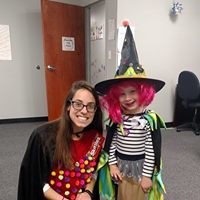 lan your time accordingly. Going Trick-or-Treating earlier in the night can be helpful, as it is often less crowded initially. Your child may benefit from a picture schedule, timer, or checklist so they know what to expect! Incorporating “break” times in which they can go back to the house or into your car, can help sensory overload. Be aware of your child’s warning signs that they might be getting overstimulated.
lan your time accordingly. Going Trick-or-Treating earlier in the night can be helpful, as it is often less crowded initially. Your child may benefit from a picture schedule, timer, or checklist so they know what to expect! Incorporating “break” times in which they can go back to the house or into your car, can help sensory overload. Be aware of your child’s warning signs that they might be getting overstimulated.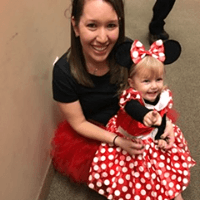 Make your own Halloween Traditions. When all is said and done, there is no rule saying you have to participate in any of these activities. If they are too much, it’s simply too much! Take it in stride and create your own Halloween traditions, by making it a pizza or game night, do
Make your own Halloween Traditions. When all is said and done, there is no rule saying you have to participate in any of these activities. If they are too much, it’s simply too much! Take it in stride and create your own Halloween traditions, by making it a pizza or game night, do 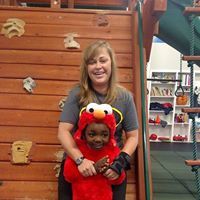 your child’s favorite activity, or have a special Mommy or Daddy only date every year to make the holiday special in another way.
your child’s favorite activity, or have a special Mommy or Daddy only date every year to make the holiday special in another way.